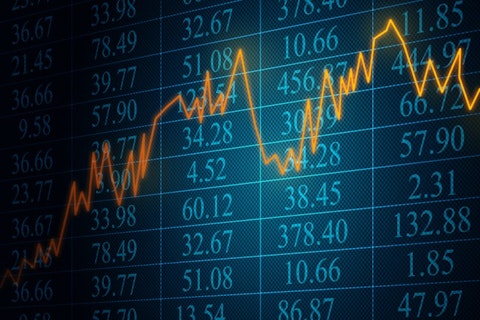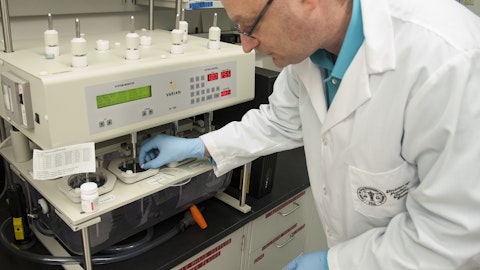This is a guest post written by Ben Reynolds at Sure Dividend. Sure Dividend helps individual investors build high quality dividend growth portfolios (1) from Dividend Aristocrats and other dividend stocks with long histories.
The article Dividend Growth Investors: Stay The Course thoughtfully examines the difficulties of investing in dividend growth stocks when stock prices are falling.

lassedesignen/Shutterstock.com
The article discusses how important it is to stay the course and continue building your dividend growth portfolio – even when prices are falling. See below for an excerpt:
“There is a reason why stocks have done much better than bonds in the long-run – they are riskier. With stocks, there is always the chance that there will be violent fluctuations in the price. You can have steep downturns, which can have many weak hands scrambling for the exits. When stock prices go down, many investors assume that something is wrong, they panic and sell. They forget that your upside potential in terms of dividends and capital gains is virtually unlimited.”
The volatility of dividend stocks is what makes staying the course more difficult. The larger the price fluctuations, the harder it is to hold onto a stock.
Think of investing in dividend growth stocks like bull riding. The longer you stay on, the better off you will be. It’s easier to ride a placid bull than an enraged one. The same is true of dividend stocks. Some have wild price fluctuations that threaten to ‘buck off’ investors who are unable to stomach large losses. Other stocks make for an easier ride – they have lower stock price volatility.
This article takes a look at 3 of the lowest volatility non-utility dividend growth stocks around to make your dividend growth journey as smooth as possible.
Johnson & Johnson (NYSE:JNJ)
Johnson & Johnson (NYSE:JNJ) is the largest is the largest health care corporation in the world. The company has a market cap of $296 billion. In fact, only 6 other businesses have larger market caps than Johnson & Johnson.
The company has a 10 year stock price standard deviation of just 16.3% – the lowest of any business with 25+ years of dividend payments without a reduction.
Johnson & Johnson’s dividend history shows evidence of its amazing stability. The company has paid increasing dividends for 53 consecutive years (2). This makes Johnson & Johnson one of just 17 Dividend Kings – Dividend stocks with 50+ years of dividend increases.
The company is still growing despite its massive size and long history. Johnson & Johnson grew earnings-per-share at 5.5% a year over the last decade.
Growth of 5.5% a year is not an eye-popping number. Investors looking for high risk, high return securities should look elsewhere.
With that said, Johnson & Johnson offers solid total return potential. The company currently has a dividend yield of 2.8%. I expect Johnson & Johnson to continue compounding its earnings-per-share at between 5% and 7% a year. This growth combined with the company’s current dividend yield gives investors expected total returns of 7.8% to 9.8% a year.
For comparison, the S&P 500 has returned 9.0% a year over the long run (including dividends). The historical average price-to-earnings ratio and dividend yield of the S&P 500 is 15.6 and 4.4%, respectively. The S&P 500 currently has a 23.90 price-to-earnings ratio and a 2.20% dividend yield. The forward P/E on S&P 500 is 18.10. It is likely that the S&P 500 generates returns under its long-term historical average of 9.0% a year going forward.
This means that it is likely that Johnson & Johnson either matches or exceeds the S&P 500’s total returns going forward – before accounting for changes in its valuation multiple.
Johnson & Johnson (NYSE:JNJ) currently trades for a price-to-earnings multiple of 20.90. The forward P/E ratio is 17.10 This is below the S&P 500’s price-to-earnings rate. Johnson & Johnson is an ultra-high quality business that should command a price-to-earnings multiple at least equal to that of the S&P 500 – especially considering the total return potential of the two investments.
Johnson & Johnson’s combination of low volatility, safety, and reasonable return make it a compelling choice for dividend growth investors looking for stability.
Follow Johnson & Johnson (NYSE:JNJ)
Follow Johnson & Johnson (NYSE:JNJ)
Receive real-time insider trading and news alerts





